When looking at the night sky, many people often wonder what remains invisible.

This long-exposure image shows a number of bright stars, star-forming regions, and the plane of the Milky Way above the ALMA observatory in the Southern Hemisphere. The closest stars are only a few light-years away: less than a factor of 10 from the edge of the Oort Cloud. However, more distant stars and objects still visible to the naked eye can be tens of thousands of light-years away.
Our glittering starry sky contains only a few visible galaxies.

Behind the dome of a series of telescopes at the European Southern Observatory, the Milky Way rises in the southern sky, flanked by the Large and Small Magellanic Clouds (right). Although several thousand stars and the plane of the Milky Way are visible to the human eye, there are only four galaxies other than our own that the normal human eye can see without any aids.
Thanks to the capabilities of modern observatories, much more becomes clear.

This comparison image, showing the same region as captured by Hubble’s eXtreme Deep Field (top) and JWST’s JADES survey (bottom), shows a selection of many ultra-distant galaxies found in the early Universe. When we observe the Universe from a great distance, we see it as it was in the distant past: smaller, denser, hotter, and less evolved. Back at the limits of JWST’s capabilities, we see evidence of stars and galaxies everywhere.
In the Milky Way alone there are between 200 and 400 billion stars.

The European Space Agency’s space-based Gaia mission has mapped the three-dimensional positions and locations of more than a billion stars in our Milky Way: more than ever before. The ability to measure stellar parallax, how a star’s real (rather than apparent) position changes over the course of a calendar year, is made much easier by superior instruments, large apertures, Gaia’s position in space, and the development of photography and computer-assisted identification of the relative displacement of stars. Over several years, Gaia can also provide information about the velocities of these stars.
Many have sun-like properties: they are rich in heavy elements and have rich planetary systems.
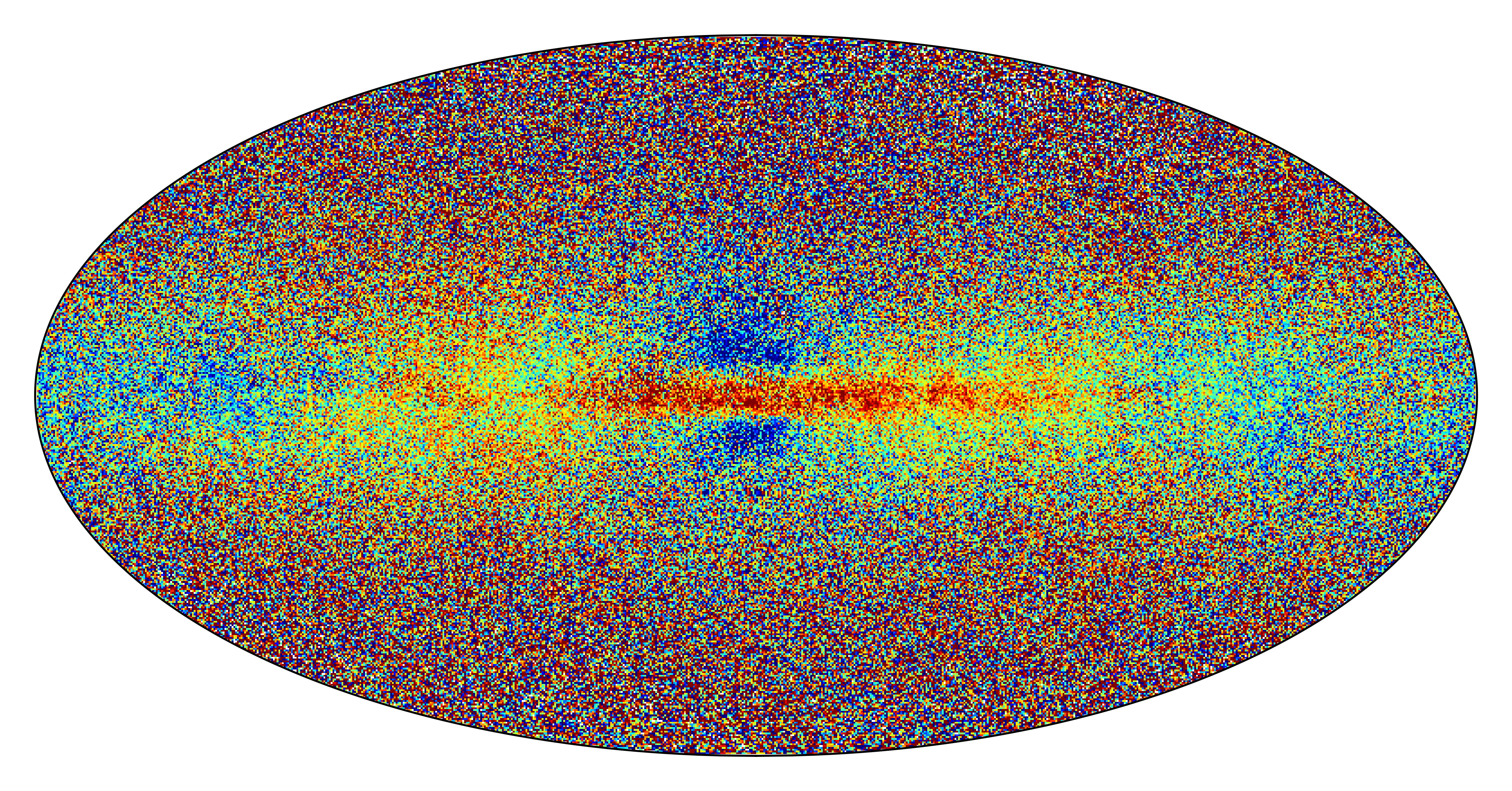
This color-coded map shows the heavy element abundances of more than 6 million stars in the Milky Way. Stars in red, orange, and yellow are all so rich in heavy elements that they should have planets; green and cyan-coded stars should rarely have planets, and blue or violet-coded stars should have absolutely no planets around them. Note that the central plane of the galactic disk, which extends into the galactic core, has the potential for habitable, rocky planets. This map shows less than 0.01% of the stars in our galaxy.
Our Local Group – dominated by the Milky Way and Andromeda – contains over 100 known galaxies.

Our Local Group of galaxies is dominated by Andromeda and the Milky Way, but there is no denying that Andromeda is the largest, the Milky Way is number 2, Triangulum is number 3, and LMC is number 4. At just 165,000 light years away, it is by far the closest to our own of the top 10+ galaxies and therefore occupies the largest angle in the sky of any galaxy outside the Milky Way. There are over 100 galaxies within the Local Group, but Andromeda and the Milky Way contain the most stars as well as the most mass.
A look into the deepest depths of space reveals the cosmic history of stars and galaxies.

There are numerous galaxies comparable to the Milky Way today, but younger galaxies similar to the Milky Way are inherently smaller, bluer, and generally more gaseous than the galaxies we see today. Over time, many smaller galaxies become gravitationally bound together, resulting in mergers, but also groups and clusters with a large number of galaxies overall.
Modern, massive galaxies are formed by the accumulation and merging of earlier, smaller and more primitive galaxies.
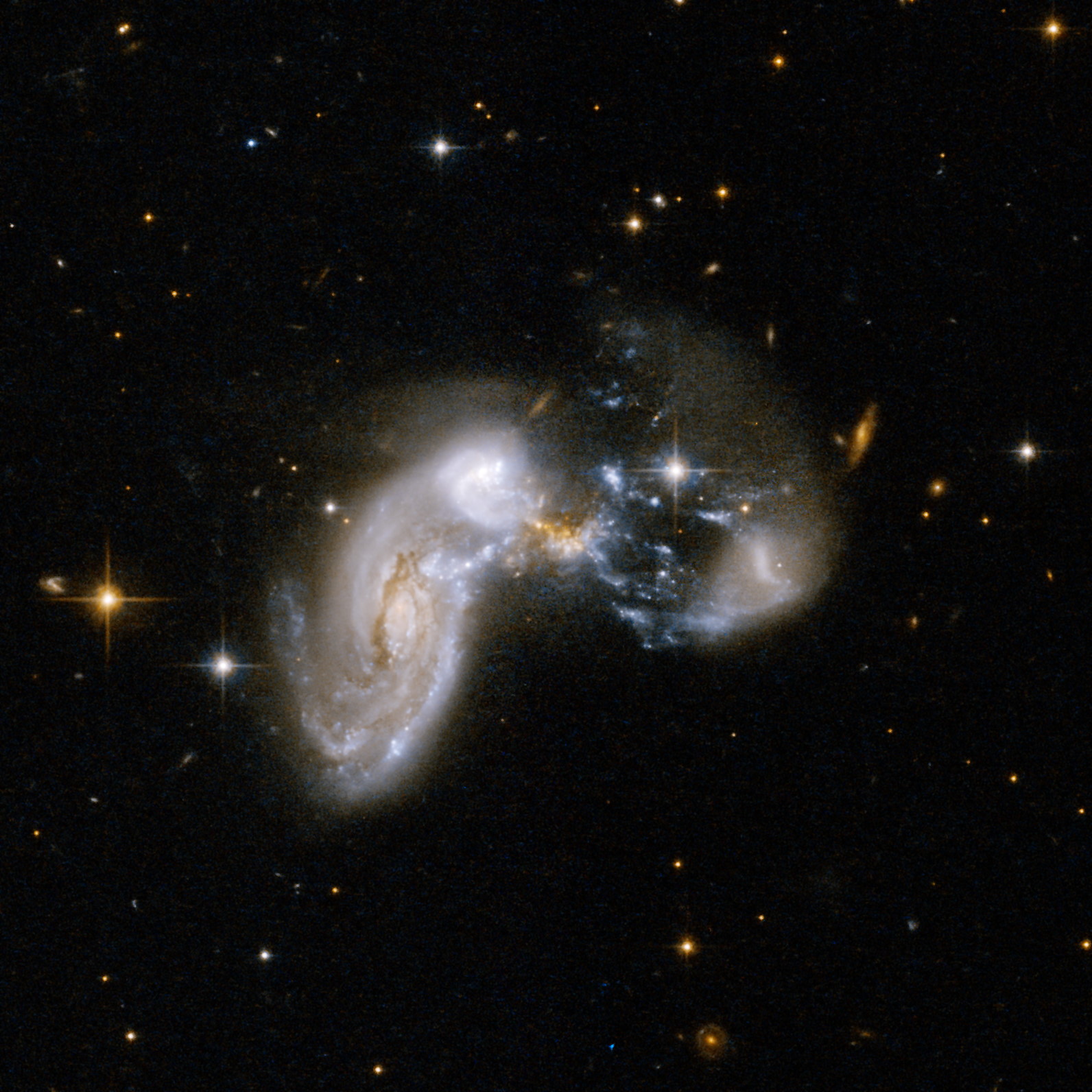
Zw II 96 in the constellation Delphinus (Dolphin) is an example of a galaxy merger occurring about 500 million light-years away. These types of events trigger star formation and can consume large amounts of gas in each of the progenitor galaxies, as opposed to a steady stream of low-level star formation as seen in isolated galaxies. Note the streams of stars between the interacting galaxies, which may either become part of a stellar population in the post-merger galaxy’s stellar halo or be ejected entirely from the post-merger galaxy and migrate through the intergalactic medium. The end result will be a larger number of stars bound together in a smaller number of galaxies.
In the earliest times, all galaxies were small and had low mass compared to today.

This section of one of our deepest views of the Universe, taken with JWST, overlaps with data from the Hubble eXtreme Deep Field. Compared to Hubble, JWST reveals a tremendous number of objects previously invisible to Hubble, even at only about 4% of observing time. Most of these galaxies are small and low-mass, but are currently forming stars rapidly, allowing JWST to detect their presence.
Meanwhile, star formation reached its peak about 11 billion years ago.

When large mergers of similar-sized galaxies occur in the Universe, they form new stars from the hydrogen and helium gas present within them. This can lead to greatly increased rates of star formation, similar to what we observe in the nearby galaxy Henize 2-10, located 30 million light-years away. This galaxy will likely evolve into another disk galaxy after the merger if large amounts of gas remain within it, or into an elliptical galaxy if all or almost all of the gas is ejected by the current starburst. Starburst events like this were much more common earlier in cosmic history than they are today.
It reached this peak from a starless state and has been slowly declining since then.
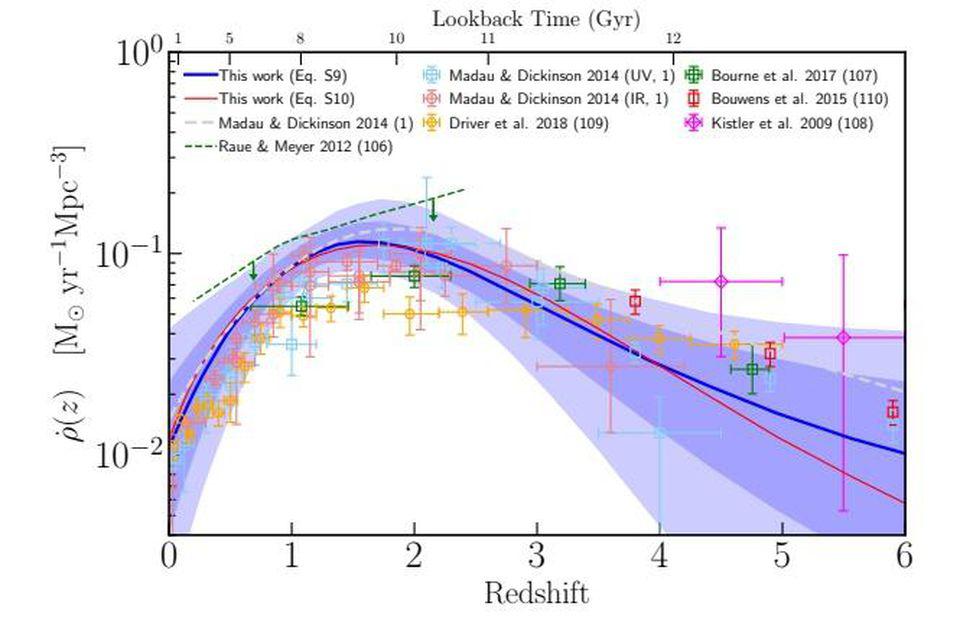
The star formation history of the Universe reconstructed by the Fermi-LAT collaboration was compared with other data points from alternative methods found in the literature. We arrive at a consistent set of results across many different measurement methods, with the largest uncertainties at the highest redshifts and earliest times. These uncertainties represent less than 1% uncertainty in the total number of stars formed over the course of cosmic history.
Today there are between 6 and 20 trillion galaxies in the universe.

There are only about 1000 stars in total in the dwarf galaxies Segue 1 and Segue 3, the latter having a gravitational mass of an impressive 600,000 suns. The stars that make up the dwarf satellite Segue 1 are circled here. As we discover smaller, fainter galaxies with fewer stars, we begin to realize how common these small galaxies are and how high their ratio of dark matter to normal matter can be; there can be as many as 100 of them for each galaxy similar to the Milky Way, with dark matter outnumbering normal by several hundred or even more.
However, only about 100 billion are large and massive.
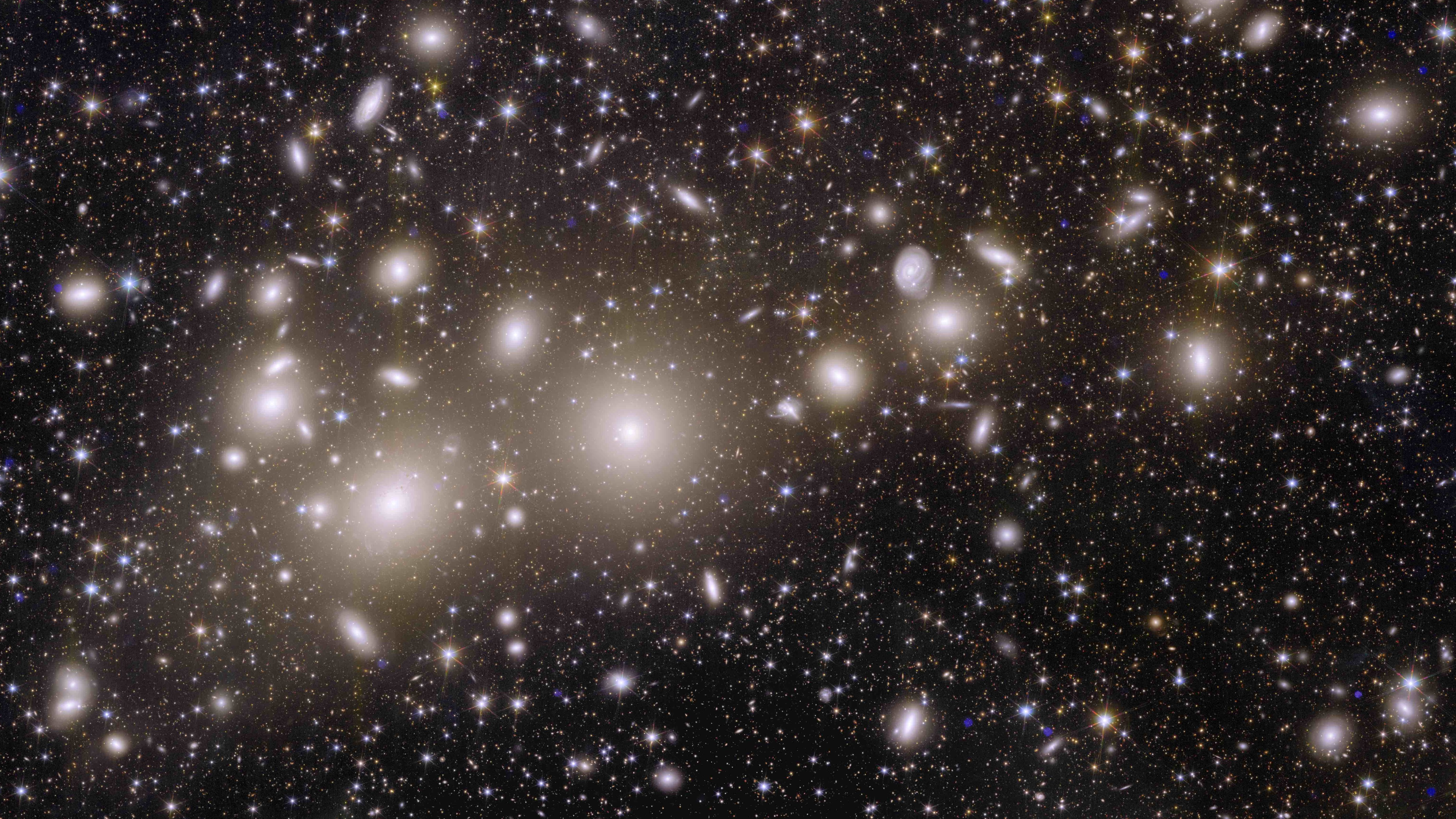
This view of the Perseus galaxy cluster shows over 1,000 galaxies all clustered together at a distance of about 240 million light-years. Many tens of thousands more are visible in the background of the image. Although the image is visually dominated by the most massive galaxies with the most stars, these are much smaller, fainter, and less massive, making them extremely difficult to see even up close.
And these ~100 billion “most massive” galaxies contain over 99% of our cumulative 2.21 × 1021 (2.21 sextillion) stars.

This deep region of the GOODS South field contains 18 galaxies where stars are forming so rapidly that the number of stars will double in just 10 million years: just 0.1% of the lifetime of the Universe. The deepest views of the Universe, as provided by space telescopes, take us back to the early history of the Universe, when star formation rates were much higher than today, but less than 1% of the Universe’s total stars had already formed. Many of the most distant galaxies are in close proximity to other foreground galaxies, whose mass distorts and amplifies the light from background objects.
The earliest stars and the galaxies with the lowest mass have the greatest uncertainties.
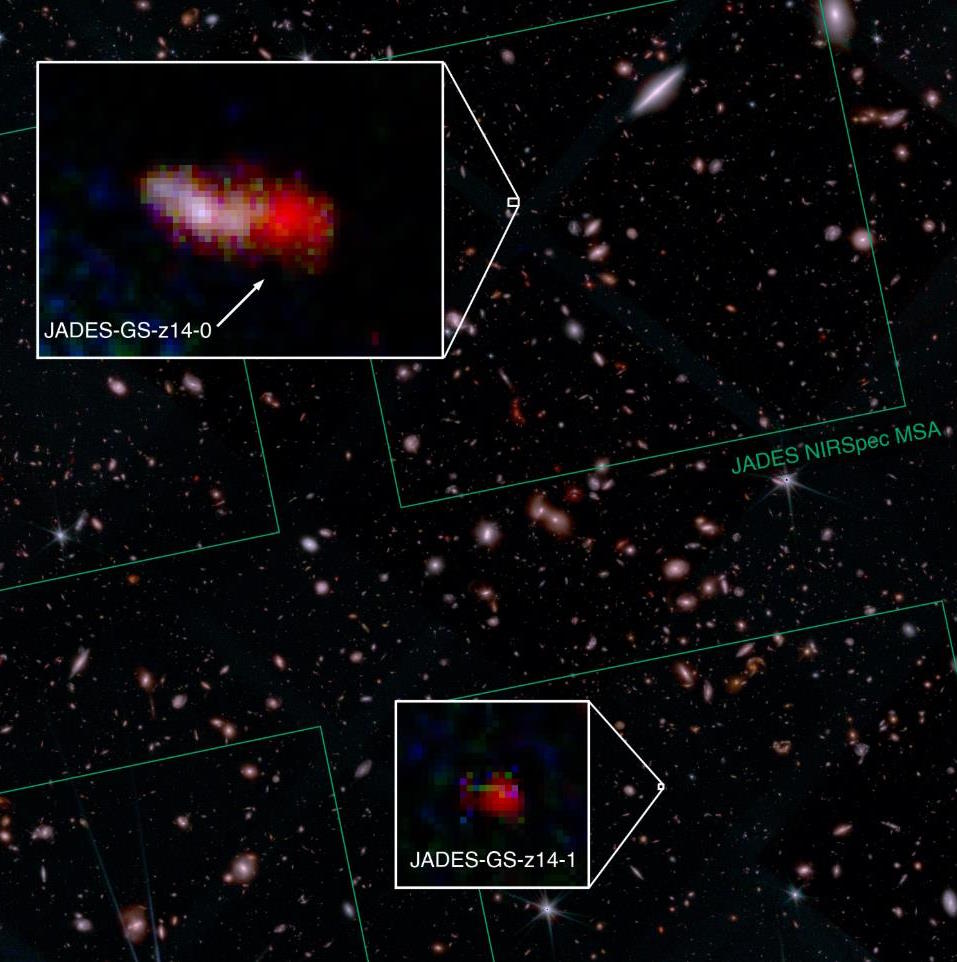
JADES-GS-z14-0, in the upper inset, is behind (and just to the right of) a closer, brighter, bluer galaxy. Only the power of incredible resolution spectroscopy, able to separate the two sources, has enabled the nature of this record-breakingly distant object to be determined. Its light dates from when the Universe was only 290 million years old: just 2.1% of its current age. JADES-GS-z14-1, just below, dates from when the Universe was about 300 million years old. Compared to large, modern galaxies, all early galaxies contain few stars.
Most stars are in galaxies similar to the Milky Way, but most galaxies are not like ours.
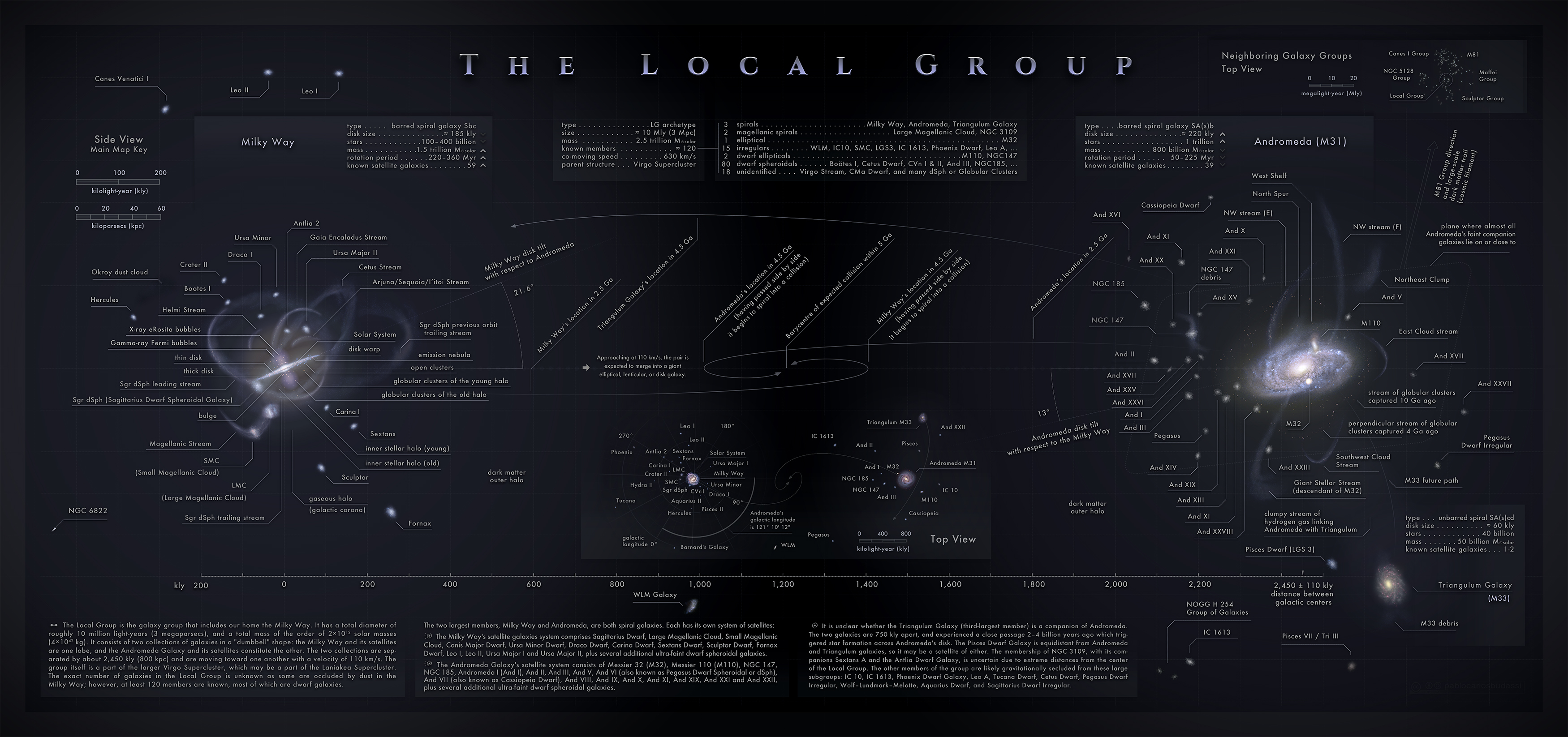
This image of our Local Group, which contains the Milky Way (left), shows that for every large galaxy like the Milky Way or Andromeda in our universe today, there are between 30 and 100 known small, low-mass galaxies. Most stars are found in large, massive galaxies, but most galaxies are small and seemingly insignificant.
“Mostly Mute Monday” tells an astronomical story in pictures, graphics and no more than 200 words.

